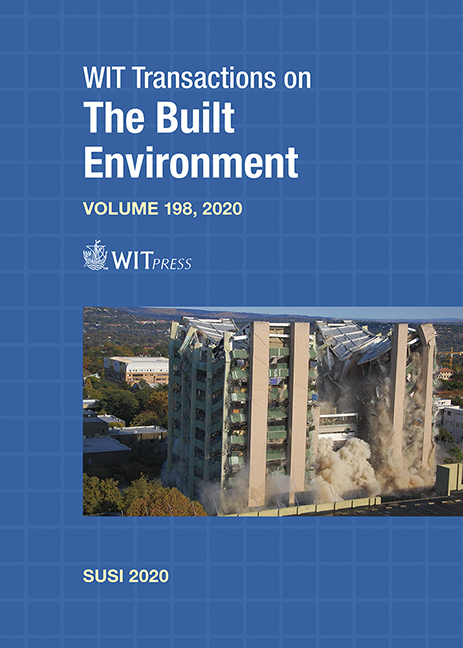IMPACTS OF TRANSVERSE EARTHQUAKES ON SEISMIC RESPONSE OF BRIDGES WITH ROCKING FOUNDATIONS AND VARIOUS SHEAR KEYS
Price
Free (open access)
Transaction
Volume
198
Pages
13
Page Range
125 - 137
Published
2020
Paper DOI
10.2495/SUSI200101
Copyright
WIT Press
Author(s)
OMAR EL-HAWAT, BEHZAD FATAHI, AMIR A. MOSAVI
Abstract
Rocking foundations are proven to be an effective base isolation technique that improves the seismic performance of bridges and minimises the damage at the piers during large earthquakes. However, due to the foundations ability to uplift, the subsequent reduction of the pier’s stiffness leads to larger column drifts and deck displacements. This not only attracts larger stresses to the transverse direction of the deck, but also at the abutment which, if not carefully considered, can lead to severe damages. Therefore, this study will investigate the seismic response of bridges with rocking pile foundations subjected to transverse earthquake excitations and compare it to the response of conventional fixed base bridges. Two separate shear key performance levels are investigated for each bridge: (1) non-linear shear keys that break off; and (2) shear keys that remain rigid. 3D numerical models of the bridges are developed using finite element software with consideration of soil-structure interaction. Moreover, non-linear time history analyses are performed on the bridges using four ground-motion records, where their dynamic response are then compared. Results show that the conventional bridges collapsed due to the development of plastic hinging at the piers. However, the bridges with the rocking pile foundations experienced significant deck displacements which caused flexural plastic hinging of the deck and the subsequent collapse of the bridge. Moreover, when the shear keys failed, the deck experienced large displacements at the abutment which caused the bearing to rupture and displace permanently with the risk of unseating and span failure. Bridges with this foundation system will require additional design provisions to prevent such failures from occurring.
Keywords
rocking foundations, soil-structure interaction, shear key, base isolation, time history analysis





